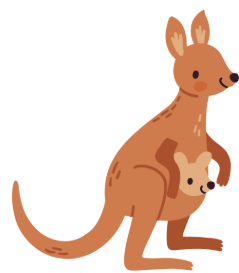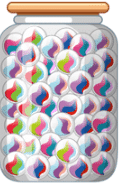Class 4 Maths Worksheet Solutions Chapter 9 Equal Groups
Q1: Multiple Choice Questions
1. If a kangaroo jumps 7 steps at a time, which number will it NOT land on? a) 21
a) 21
b) 35
c) 52
d) 49
Answer: c) 52
Explanation: 52 is not a multiple of 7 (7 × 7 = 49, 7 × 8 = 56).
2. What is the result of doubling 38?
a) 76
b) 64
c) 82
d) 56
Answer: a) 76
Explanation: Doubling means multiplying by 2: 38 × 2 = 76.
3. Which of these is a common multiple of 5 and 6?
a) 15
b) 20
c) 30
d) 35
Answer: c) 30
Explanation: 30 appears in both multiples of 5 (5, 10, 15, 20, 25, 30) and 6 (6, 12, 18, 24, 30).
4. How many groups of 5 can you make from 45 marbles? a) 8
a) 8
b) 9
c) 10
d) 11
Answer: b) 9
Explanation: 45 ÷ 5 = 9 groups.
Q2: Answer the Following Questions
5. List the first 4 multiples of 9.
Answer: 9, 18, 27, 36
Explanation: 9 × 1 = 9, 9 × 2 = 18, 9 × 3 = 27, 9 × 4 = 36.
6. Calculate: 25 × 4 using the doubling method.
Answer: 100
Explanation: Double 25 = 50, then double again: 50 × 2 = 100.
7. Divide 72 pencils equally into 8 boxes. How many pencils per box? Answer: 9
Answer: 9
Explanation: 72 ÷ 8 = 9 pencils per box.
8. Find the smallest 3-digit multiple of 8.
Answer: 104
Explanation: 8 × 12 = 96 (2-digit), 8 × 13 = 104 (3-digit).
9. Multiply: 15 × 6 by breaking into 10 + 5.
Answer: 90
Explanation: (10 × 6) + (5 × 6) = 60 + 30 = 90.
10. How many jumps of 6 steps are needed to reach 78?
Answer: 13
Explanation: 78 ÷ 6 = 13 jumps.
Q3: Word Problems
11. A frog jumps 5 steps each time. How many jumps to reach 75? Answer: 15 jumps
Answer: 15 jumps
Solution: Total steps = 75. Steps per jump = 5.
Number of jumps = 75 ÷ 5 = 15.
12. Priya has 120 stickers. She packs them into envelopes of 8 stickers each. How many envelopes can she make?
Answer: 15 envelopes
Solution: Total stickers = 120. Stickers per envelope = 8.
Number of envelopes = 120 ÷ 8 = 15.
13. A rabbit jumps 9 steps per leap. Will it land on 108? If yes, how many leaps?
Answer: Yes, 12 leaps
Solution: 108 ÷ 9 = 12 with no remainder, so yes.
14. A school orders 144 pencils to be shared equally among 12 classes. How many pencils per class?
Answer: 12 pencils
Solution: Total pencils = 144. Number of classes = 12.
Pencils per class = 144 ÷ 12 = 12.
15. Find two common multiples of 4 and 7 between 20 and 50.
Answer: 28, 56
Solution: Multiples of 4: 4, 8, 12, 16, 20, 24, 28, 32, 36, 40, 44, 48, 52, 56.
Multiples of 7: 7, 14, 21, 28, 35, 42, 49, 56.
Common multiples in range: 28 and 56.
16. A magician doubles 17 coins. How many coins does he have now? Answer: 34 coins
Answer: 34 coins
Solution: Doubling means multiplying by 2: 17 × 2 = 34.
17. A squirrel collects 112 nuts and stores them in 7 holes equally. How many nuts per hole?
Answer: 16 nuts
Solution: Total nuts = 112. Number of holes = 7.
nuts per hole = 112 ÷ 7 = 16.
18. A bike has 2 wheels. How many wheels do 150 bikes have?
Answer: 300 wheels
Solution: Wheels per bike = 2. Total bikes = 150.
Total wheels = 150 × 2 = 300.
19. A farmer has 96 apples to pack into boxes of 6 each. How many boxes are needed?
Answer: 16 boxes
Solution: Total apples = 96. Apples per box = 6.
Number of boxes = 96 ÷ 6 = 16.
20. A kangaroo jumps 11 steps per leap. How many steps after 9 leaps?
Answer: 99 steps
Solution: Steps per leap = 11. Number of leaps = 9.
Total steps = 11 × 9 = 99.
FAQs on Class 4 Maths Worksheet Solutions Chapter 9 Equal Groups
| 1. What are equal groups in mathematics? |  |
| 2. How can I teach my child about equal groups? |  |
| 3. What is the importance of learning equal groups in Class 4? |  |
| 4. Can you give an example of equal groups? |  |
| 5. How can I assess my child's understanding of equal groups? |  |
















